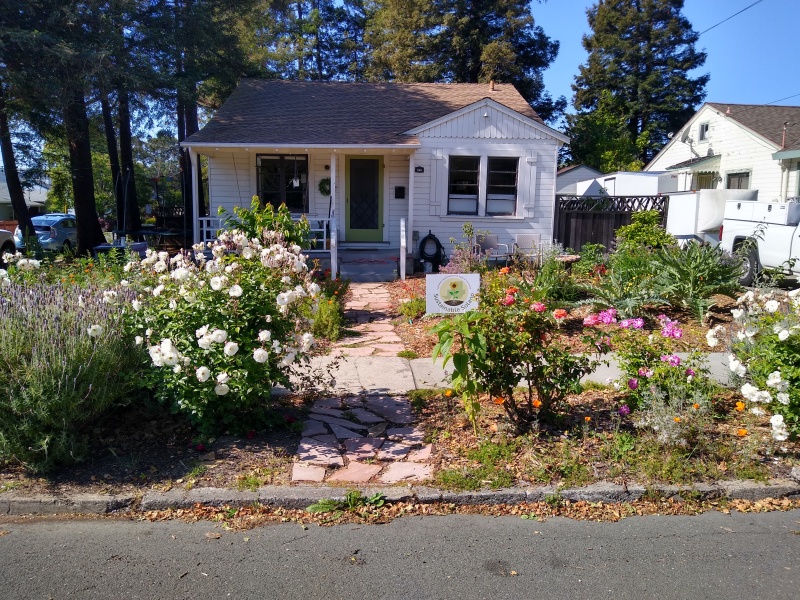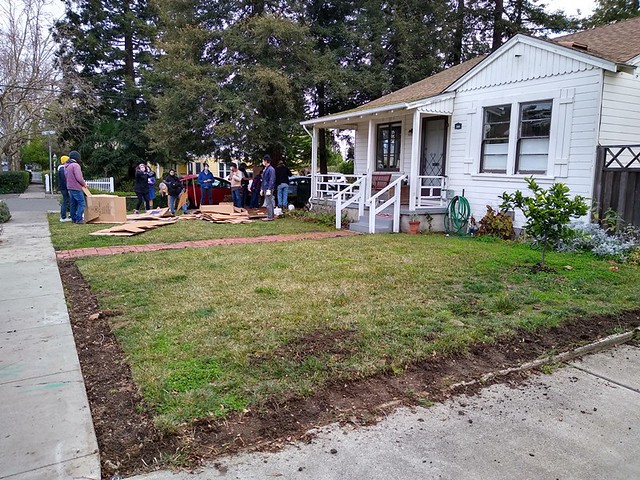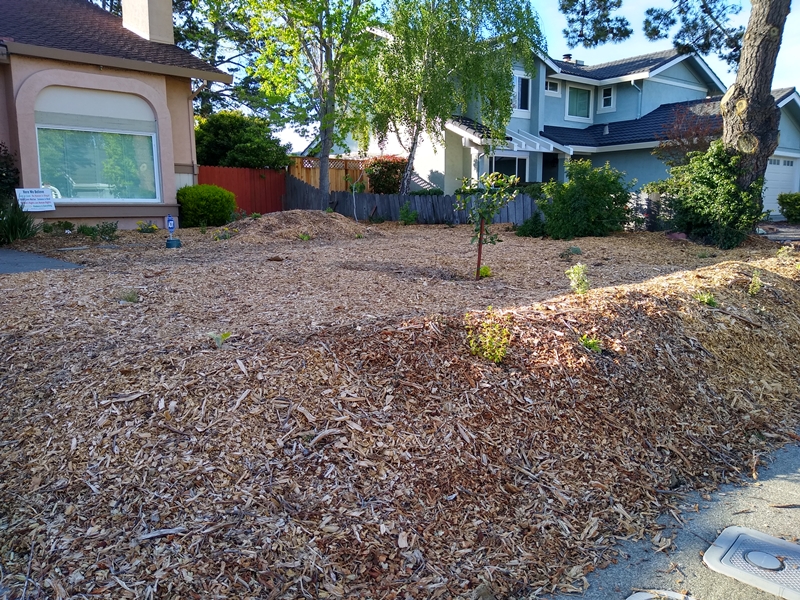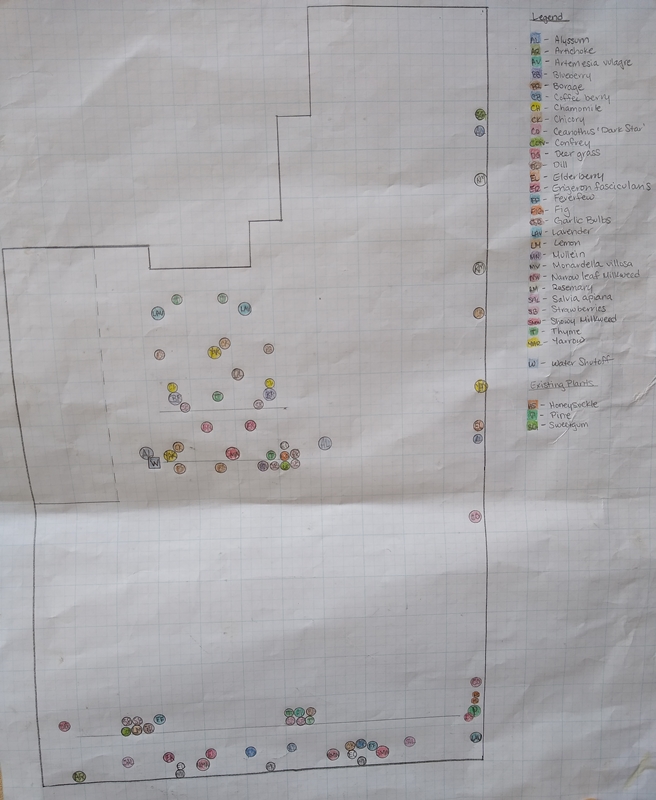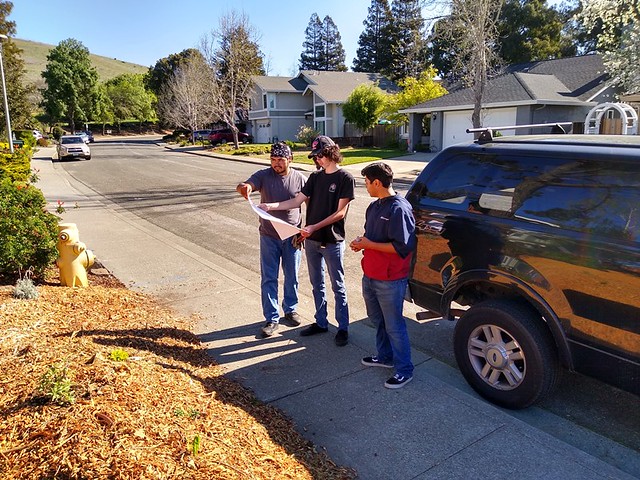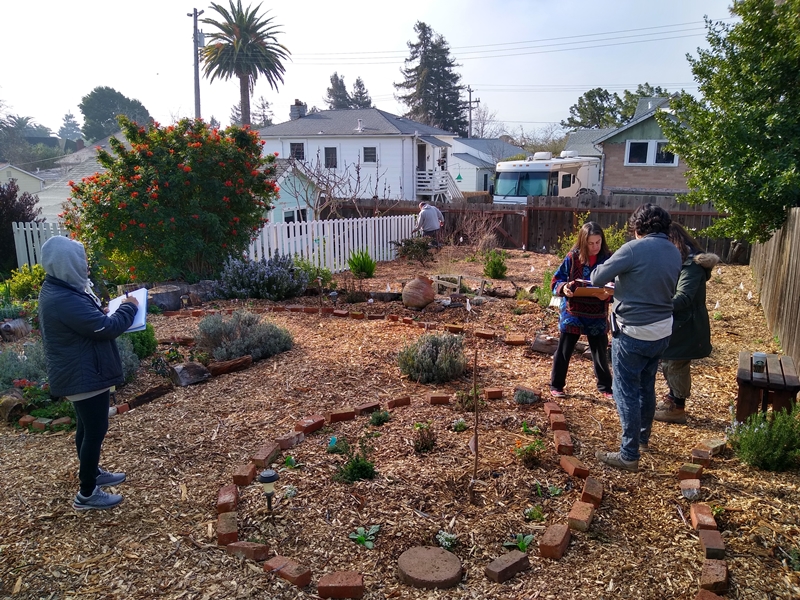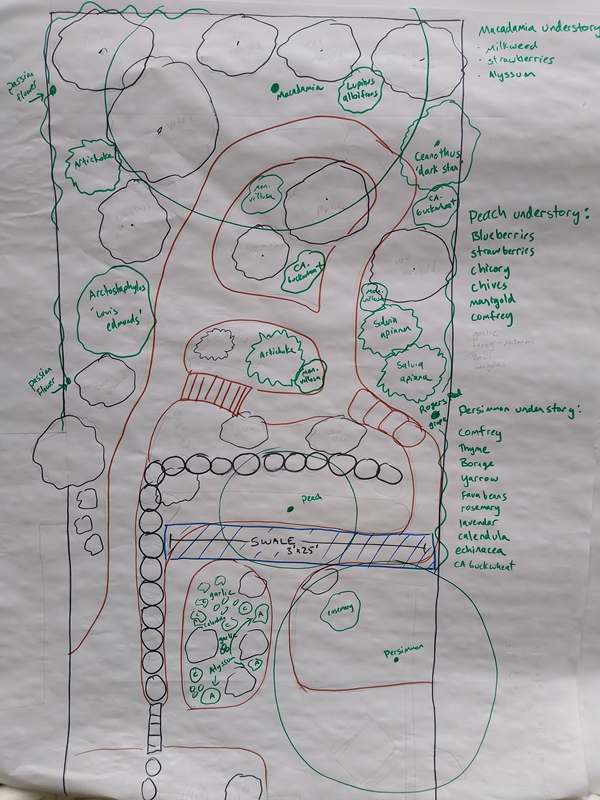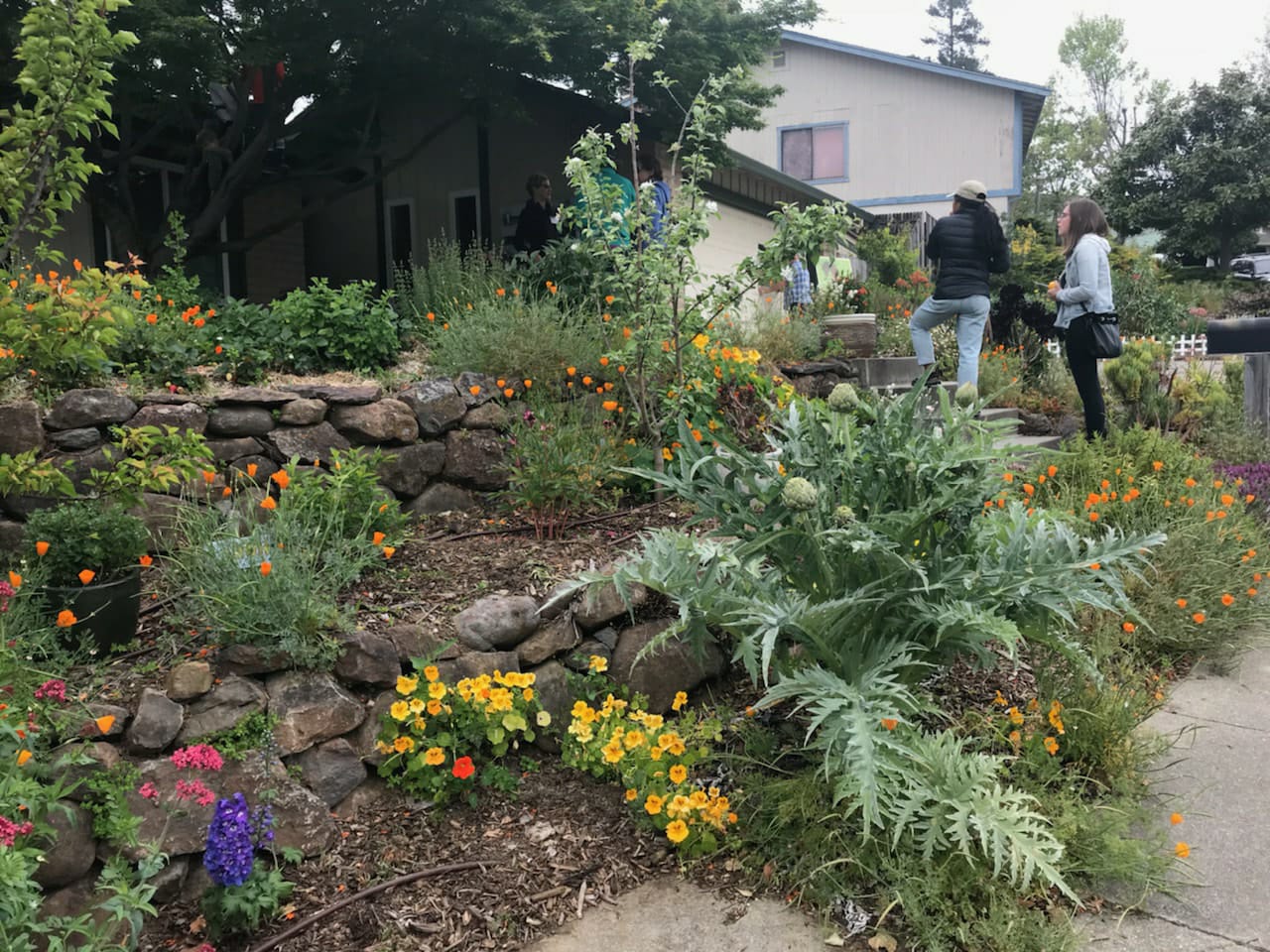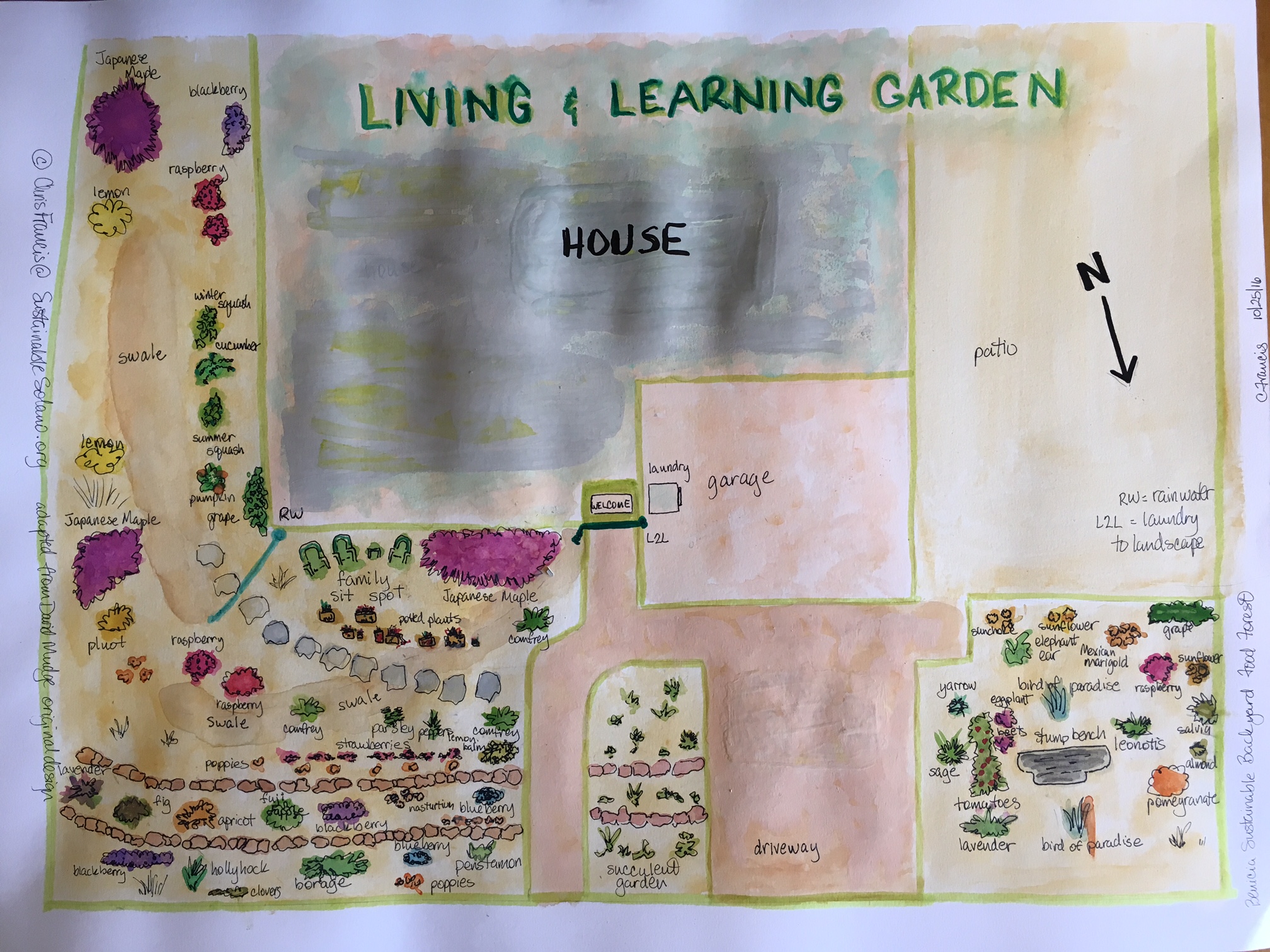Yggdrasil Garden
Yggdrasil Garden
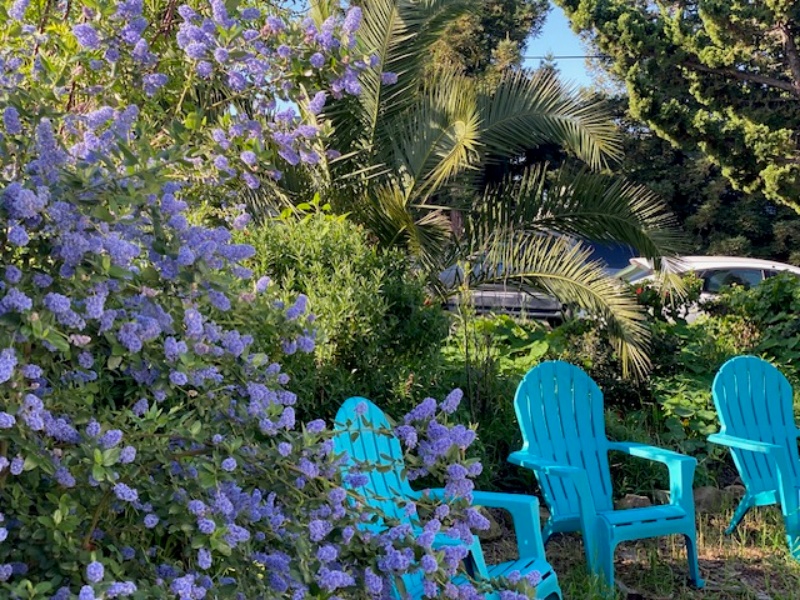
Food Forest Keepers: Heidi & Dave
An evolving food forest garden and greywater system installed as part of Sustainable Solano’s 2022-23 Permaculture Design Certificate course. Yggdrasil is the “world tree,” the Norse tree of life, an eternal green ash that reaches into the three realms and connects the nine worlds.
PDC students transformed the front yard with a rain-capturing swale and planted berms in holistic workshops infused with music and spirit. The west side yard’s raised vegetable bed and passionfruit vines are watered by a laundry-to-landscape greywater system and include edible plants and native pollinators. The monarch butterfly-hosting back gardens are designed and maintained by permaculture designer Michael Wedgley’s Soilogical, nurtured with specially prepared compost, and supported by Seth Wright’s Water Service Irrigation design created as part of a Sustainable Solano irrigation class.
An herb spiral was created with bricks repurposed from the chimney of the circa 1850s historic home, retaining walls from pieces of historic on-site stables, and patios from slate and brick on-site. The east side yard (in development) is watered with both a rain-capturing swale and a laundry-to-landscape system and will have an aquatic garden and feature scented contributions to the edible landscape.
The homes are designed for the vines from the garden to climb the railing trellises, blurring the lines between the indoors and out. The focus on the symbiosis of 19th century natural eco-architecture with 21st century technology is intended to reinforce the mindfulness of permaculture consciousness.
Site Details
Installation Date:
September 2022-February 2023
Size:
650 square feet (front yard PDC project)
Sun Exposure:
6-8 hours
Soil:
Clay
Number of Swales:
3
Secondary Water:
Rainwater
Roof water diverted to swales
Laundry-to-landscape greywater
Total Annual Water Impact:
32,749 gallons (for PDC site; the larger garden has a larger water impact)
Plant List:
Ceanothus (Ray Hartman), Blueberry, Red Flowering Currant (Ribes sanguineum), Huckleberry
Strawberry, Borage, Yarrow, Comfrey, Calendula, Pacific Coast Iris, Heuchera, Acanthus (Bear’s Breech)
This project was funded through the Solano Sustainable Backyards program and the second amendment to the Valero/Good Neighbor Steering Committee Settlement Agreement, Benicia Adult Education, and student fees.

